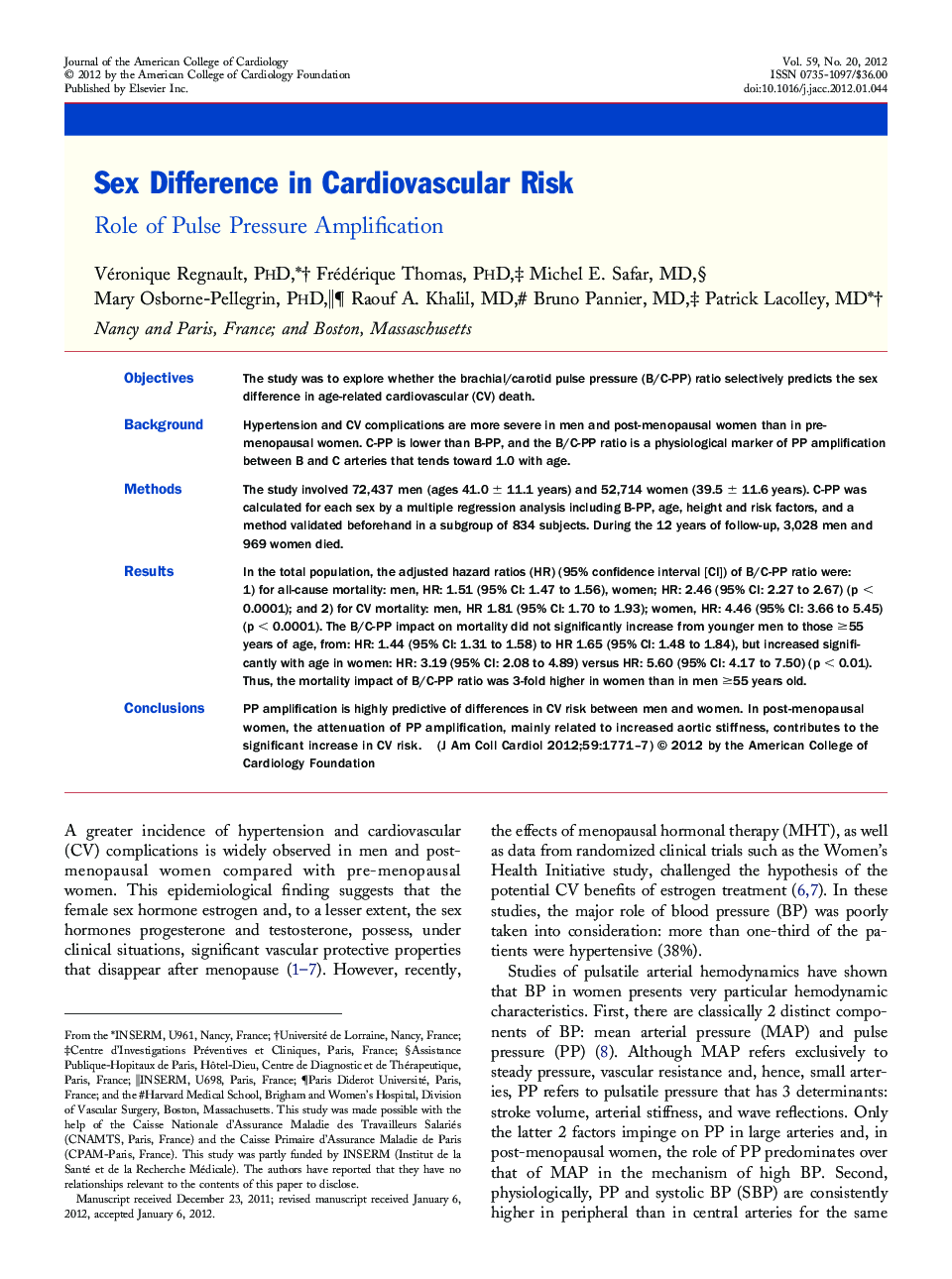| Article ID | Journal | Published Year | Pages | File Type |
|---|---|---|---|---|
| 2947502 | Journal of the American College of Cardiology | 2012 | 7 Pages |
ObjectivesThe study was to explore whether the brachial/carotid pulse pressure (B/C-PP) ratio selectively predicts the sex difference in age-related cardiovascular (CV) death.BackgroundHypertension and CV complications are more severe in men and post-menopausal women than in pre-menopausal women. C-PP is lower than B-PP, and the B/C-PP ratio is a physiological marker of PP amplification between B and C arteries that tends toward 1.0 with age.MethodsThe study involved 72,437 men (ages 41.0 ± 11.1 years) and 52,714 women (39.5 ± 11.6 years). C-PP was calculated for each sex by a multiple regression analysis including B-PP, age, height and risk factors, and a method validated beforehand in a subgroup of 834 subjects. During the 12 years of follow-up, 3,028 men and 969 women died.ResultsIn the total population, the adjusted hazard ratios (HR) (95% confidence interval [CI]) of B/C-PP ratio were: 1) for all-cause mortality: men, HR: 1.51 (95% CI: 1.47 to 1.56), women; HR: 2.46 (95% CI: 2.27 to 2.67) (p < 0.0001); and 2) for CV mortality: men, HR 1.81 (95% CI: 1.70 to 1.93); women, HR: 4.46 (95% CI: 3.66 to 5.45) (p < 0.0001). The B/C-PP impact on mortality did not significantly increase from younger men to those ≥55 years of age, from: HR: 1.44 (95% CI: 1.31 to 1.58) to HR 1.65 (95% CI: 1.48 to 1.84), but increased significantly with age in women: HR: 3.19 (95% CI: 2.08 to 4.89) versus HR: 5.60 (95% CI: 4.17 to 7.50) (p < 0.01). Thus, the mortality impact of B/C-PP ratio was 3-fold higher in women than in men ≥55 years old.ConclusionsPP amplification is highly predictive of differences in CV risk between men and women. In post-menopausal women, the attenuation of PP amplification, mainly related to increased aortic stiffness, contributes to the significant increase in CV risk.
